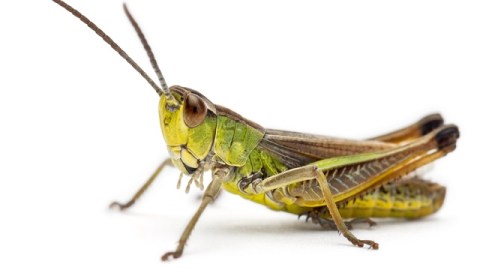Would You Eat Insects If You Could Cultivate Them Yourself?

What’s the Latest Development?
In case you’re still not on board with the idea of adding insects to your diet, designer Mansour Ourasanah offers this for consideration: A decorative pod that contains all the ingredients necessary for cultivating live grasshoppers and fits comfortably on your countertop. The Lepsis, created by Ourasanah in collaboration with appliance maker KitchenAid, contains four individual sections — for growing, feeding, harvesting, and killing — and stands 54 cm (about 21 inches) high. Currently the device is still in the prototype stage, but it’s a finalist for a prestigious INDEX award, which is issued yearly by Danish company INDEX: Design To Improve Life.
What’s the Big Idea?
Entomophagy — eating insects — got a big boost last month when the UN Food and Agriculture Organization (FAO) released a report encouraging more people to try it. Ourasanah believes his approach is a practical way to bring edible bugs — in this case, grasshoppers, which are a good source of protein — closer to those in urban environments. The ability to cultivate them in the home might even win over squeamish skeptics. Ourasanah notes: “Eighty percent of the world population already eats insects. Unfortunately, the remaining 20 percent have the most impact on the ecological fate of the planet.”
Photo Credit: Shutterstock.com





